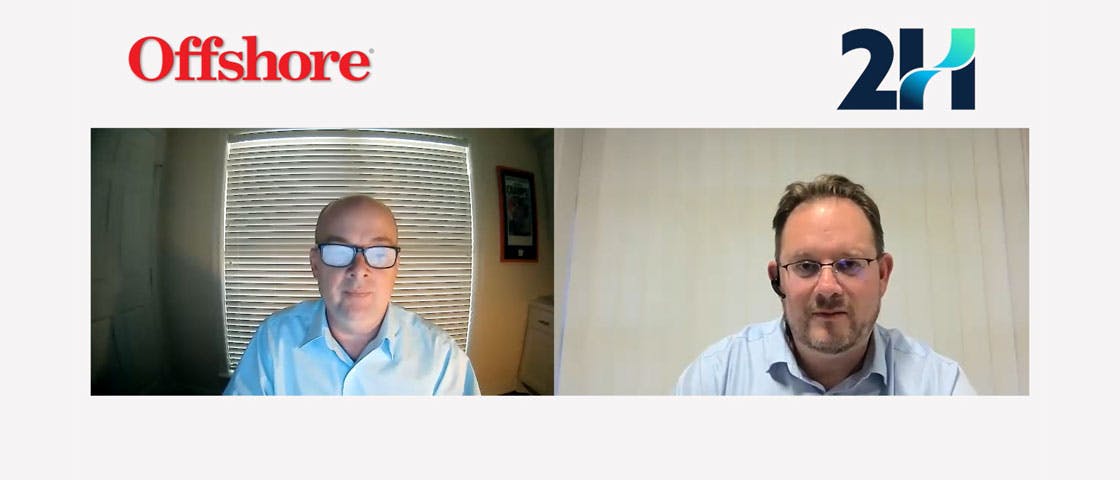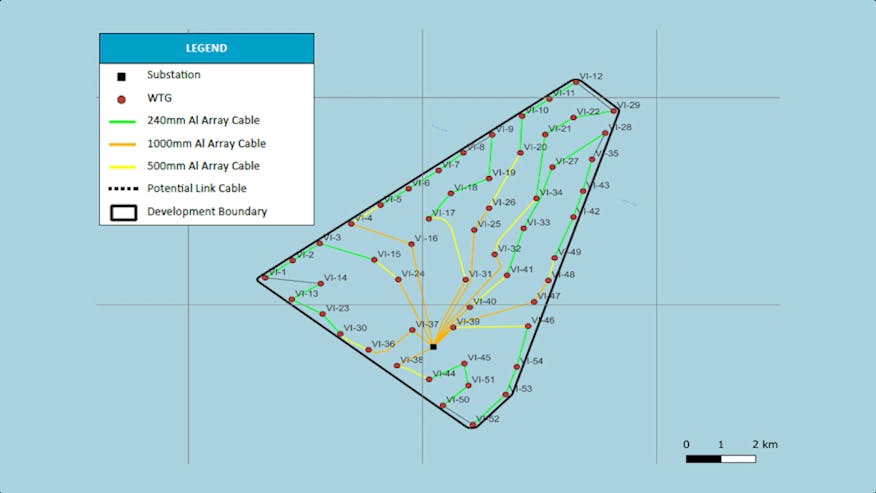Offshore Magazine Interviews Yann Helle, Group MD
Bruce Beaubouef, Managing Editor of Offshore Magazine interviewed our Group Managing Director Yann Helle. Watch the interview here and listen to his views on lessons learned from the oil and gas industry, design challenges for offshore wind farms, submarine cables, life extension and more.

14 Nov 2023
Q: What trends do you see developing that are similar to oil and gas in offshore wind?
A: It’s interesting because what we’re seeing right now is like when we all started in the oil and gas (O&G) industry in shallow water and moved into deeper and deeper water. We are seeing the same story being repeated. When I started in the O&G industry, my first boss told me: we work a lot on umbilicals and risers, which are the dynamic sections that connect the seabed to the surface and those represent 10% of the cost of the entire field but they also represent 80% of the challenges and issues we are going to face in the industry. We have now been working for 5-6 years in the renewables industry and we are seeing the exact same trend. Most of the electrical cables represent 10% of the cost but represent 80% of the insurance claims of offshore wind farms.
Q: What lessons learned can be applied to the offshore wind industry on the issues of design, dynamic analysis, and life extension?
A: One of the things we have been poor at in the O&G industry is the gathering of data, initial design dossiers, and what has been happening offshore. After 5-10 years of production, you realise quickly that you are in a very bad situation when it comes to going into the life extension phase. There should be more emphasis put upfront into gathering all the right information. We are in an age of digitalization; it should be quite easy. What we have been doing recently that works well is around predictive technology: as long as you have the data, performing digital twin of your structure, where you are inputting information on the wind, the structural stresses, the type of voltage you are getting, allows you to come up with a solution that says: “OK, we are about to encounter a problem in three years or in five years” and we can start to preempt some future issues. It’s going to be a massive issue in offshore wind. We are not talking about just one turbine but hundreds of them so the ability to master the data to help us prevent future issues is going to be of prime importance when it comes to this industry.
Q: What are some of the key challenges in the early design phase of offshore wind projects?
A: The number one issue is about the soil. What is different from the O&G industry is that the renewables industry is very focused on the LCOE. This is triggering a lot of decisions made both in the design phase and during production. We are trying so much to reduce the LCOE that some are cutting corners, there’s no other way to put it. If you look at the soil information we are getting, you realise that whether in America or APAC, or Europe, it’s very limited sample data because we are trying to do things at reduced cost. The information we get is for one site when most wind farms are 200 km2 wide. And we are close to the shore so your chances of having borders or completely different soils vary tremendously. And there is an inherent residual risk when you’re doing geotechnical installation like a foundation: very often we don’t fully master the soil, and we don’t fully understand what is going to happen for some of these foundations.
The second issue is the way we are approaching the design. In the O&G industry when you are developing a design, you start with the idea of having something in place and then you perform the installation. For the renewables industry, we cannot apply the same logic. You must consider first how you are going to install it before you do the design.
The industry is growing at a pace never seen before. In 1991, a turbine was half a megawatt. We are now working on designs for some turbines offshore in France that are 7MW. For 2024 onwards, all designs are 14 or 15 MW, we are even producing studies for turbines that are 20-25 MW; they are bigger than the Eiffel Tower, and they are gigantic. And the foundations that have been working for the past ten years, with monopiles of 8 m diameter, are not working anymore. To take these loads and forces we need monopiles that are 12-15 m in diameter. How do you install it? Do you drill it, do you pile it, is there a vessel that can lift them up? We are designing structures and we don’t have the means to install them. We are given parameters that don’t exist out there yet.
Q: Submarine power cables are a key component of offshore wind energy. What are the challenges with array cables on fixed wind facilities?
A: Let’s come back to the fact that there are lots of current issues with those that seem to be failing often. Some issues are due to the way they have been installed, some are due to the design or other scenarios. When we have a typical umbilical in O&G projects, we are looking at a probability of failure of 3%. However, when you have a big wind farm of 100 turbines, we have 100 times more connections/terminations that we have to put in place.

A lot of those cables have been designed to be in static conditions, buried under the ground. They are not that static, unfortunately. Because when we are in shallow water, we have tides and sandbanks, and sand dunes that are moving very slowly and drifting and can unhook those cables. The cable burial assessment is very important but when that happens, those cables that are supposed to be designed for static operation are going to start moving due to water-induced vibrations and all the dynamic issues we are used to seeing. There are ways to prevent it, such as putting some structures on top of them to make them heavier, but there is a cost for the industry.
Q: Looking forward to the future of floating wind, what are the challenges associated with dynamic cables for floating wind facilities?
A: The problem that we see with floating wind is that right now, it is being seen as an extension of fixed wind. It is absolutely not the same. The first challenge is that in most of the fixed wind farms, all cables are connected as a daisy chain, one to each other and they go to a substation, and from here, there is an export cable to shore. Those considerations of going with a daisy chain may not be able to apply and we potentially have to consider a fishbone- or star-type connection to mitigate the risk of the cable breaking.

That risk is extremely high. We try to reduce the price by looking at mooring systems with just three mooring lines but if it breaks, there is no system to ensure the electrical cable disconnects itself. So, the electrical cable can be completely destroyed. To increase the number of mooring lines increases the cost. There are components – disconnectable cables in particular – that have not yet been designed for floating wind.
Listen to the interview here:

